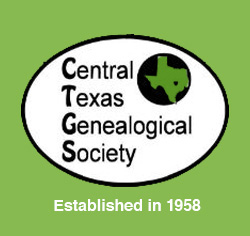 |
Serving McLennan, Hill, Bell, Bosque, Coryell, Limestone, Falls and Milam Counties |
 |
|
| © 2024 Central Texas Genealogical Society, Inc. | *Powered by EasyNetSites.com Webware |
 |
Serving McLennan, Hill, Bell, Bosque, Coryell, Limestone, Falls and Milam Counties |
 |
|
| © 2024 Central Texas Genealogical Society, Inc. | *Powered by EasyNetSites.com Webware |